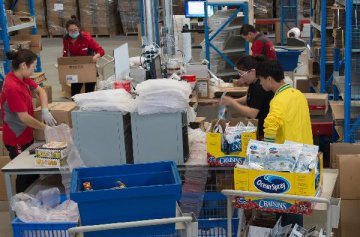
With better revenues and profits, Chinese brick-and-mortar shops have begun to see signs of recovery from the impact of booming online sales.
The combined turnover of 2,700 typical retail firms monitored by the Ministry of Commerce (MOC) went up 4.6 percent year on year in 2017.
The growth rate, although still dwarfed by a more-than-30-percent jump in transactions via e-commerce, improved substantially from the 1.6 percent recorded a year ago. Their profits returned to expansion territory with an increase of 7.1 percent, in sharp contrast with the 3.9-percent loss in 2016.
From franchise houses to supermarkets and department stores, Chinese brick-and-mortar shops are bracing for an across-the-board recovery after a bitter adjustment period that featured numerous closures, according to an article in the People's Daily.
"The retail sector generally stabilized last year as many firms briskly transform their business and make innovations," the paper quoted an MOC official as saying.
Instead of continued tough competition between traditional retailers and their online rivals, an integration trend can be seen. Many shopping malls have teamed up with e-commerce firms to grab larger market shares as fresh food supermarket Yonghui partnered with Tencent and retail giant Sun Art Retail joined hands with Alibaba.
"Offline and online retailers are integrating with each other to achieve mutual development," said Ren Guoqiang, a senior partner with consulting firm Roland Berger.
But Chinese brick-and-mortar shops are not free from challenges. The MOC cited convenience stores as an example in a report, saying rising labor costs and weakness in attracting workers have threatened the sector's sustainable growth.




















Latest comments